Interface design / information architecture
BRAUN TP1
+ TRANSISTOR RADIO T4
+ PORTABLE REGISTER PLAYER P1
————————————————————————————————————————————————
Date:
— 1959 (designed)
— 1959 (made)
— 1959 (made)
Artist / Manufacturer:
— Rams, Dieter (designer)
— Braun AG (manufacturer)
— Braun AG (manufacturer)
We take as a concept, the core values that define the german brand Braun,
leader in innovation and engineering: they are functionality, quality and aesthetics
We proposed a dynamic website to show the most important aspects
of this innovative radio and vinyl player
————————————————————————————————————————————————
— DIETER RAMS (1932-) emerged as one of the most influential industrial designers of the late
20th century by defining an elegant, legible, yet rigorous visual language for its products
• Good design is innovative.
• Good design makes a product useful.
• Good design is aesthetic.
• Good design makes a product understandable.
• Good design is unobtrusive.
• Good design is honest.
• Good design is long-lasting.
• Good design is thorough down to the last detail.
• Good design is environmentally friendly.
• Good design is as little design as possible.
• Good design makes a product useful.
• Good design is aesthetic.
• Good design makes a product understandable.
• Good design is unobtrusive.
• Good design is honest.
• Good design is long-lasting.
• Good design is thorough down to the last detail.
• Good design is environmentally friendly.
• Good design is as little design as possible.
— These ten principles defined Dieter Rams’ approach to “good design”. Each of the hundreds of products he developed during forty years with Braun, was unerringly elegant and supremely versatile. Units were made in modular sizes to be stacked vertically or horizontally. Buttons, switches and dials were reduced to a minimum and arranged in an orderly manner. Rams even devised a system of colour coding for Braun’s products, which were made in white and grey. The only splash of colour was the switches and dials.
————————————————————————————————————————————————
— This transistor radio and portable record player TP1 combined summarizes both functionalist design principles of postwar Germany and excitement of pop culture. The disc player is the larger of the two units. The rotation mechanism has a cylindrical surface projection which fits into the center hole in the record. Offbeat, the record is played on the bottom, not the top, of a needle into the rectangular hole on the left. This was revealed by a sliding panel, operated by the lever up. The position of the lever and the needle was that this could only be seven inches wide 'singles', playing at 45 rpm. This format became synonymous with pop music and lifestyle.
Transistors were an innovation of the 1950s that enabled radios to be miniaturized and become portable. In this design, the radio and the phonograph could be used independently, but they fit together in the elegant aluminum case and durable transport, emphasizing portability.
The function and design of this audio system, and even the forms, materials and colors, anticipating hugely successful iPod family of portable music players, Apple launched half a century after this product was designed.
Some screenshots from the site
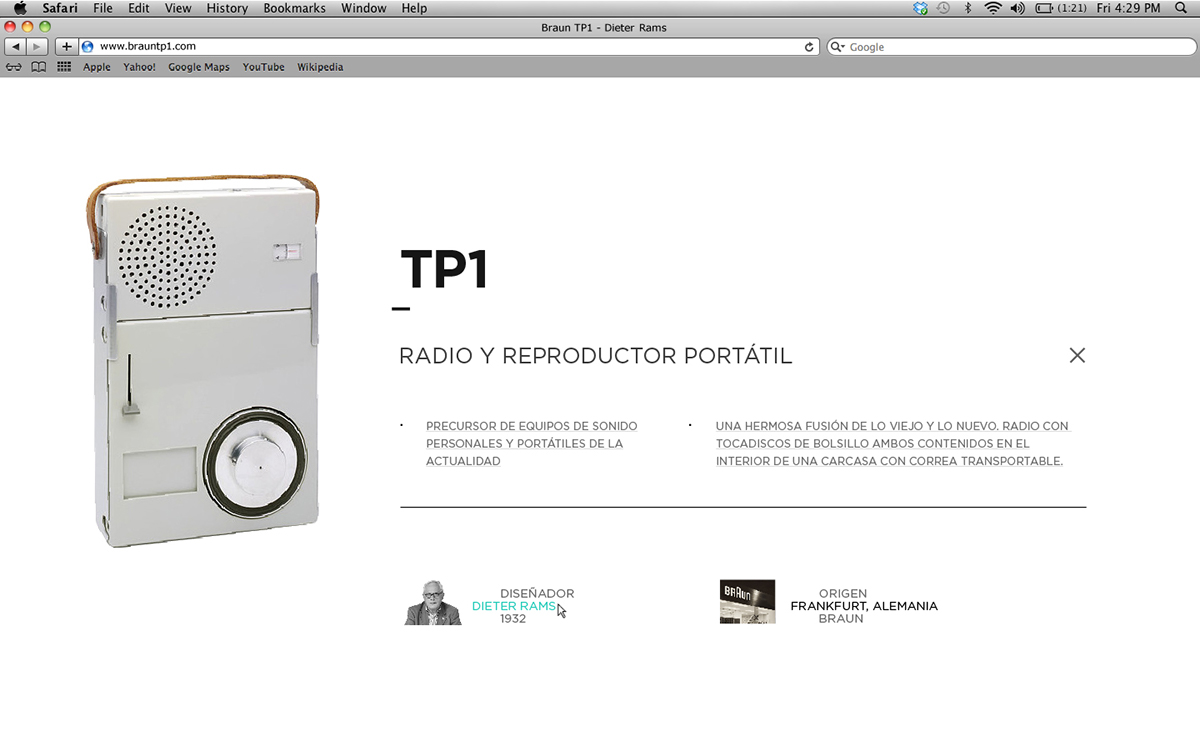
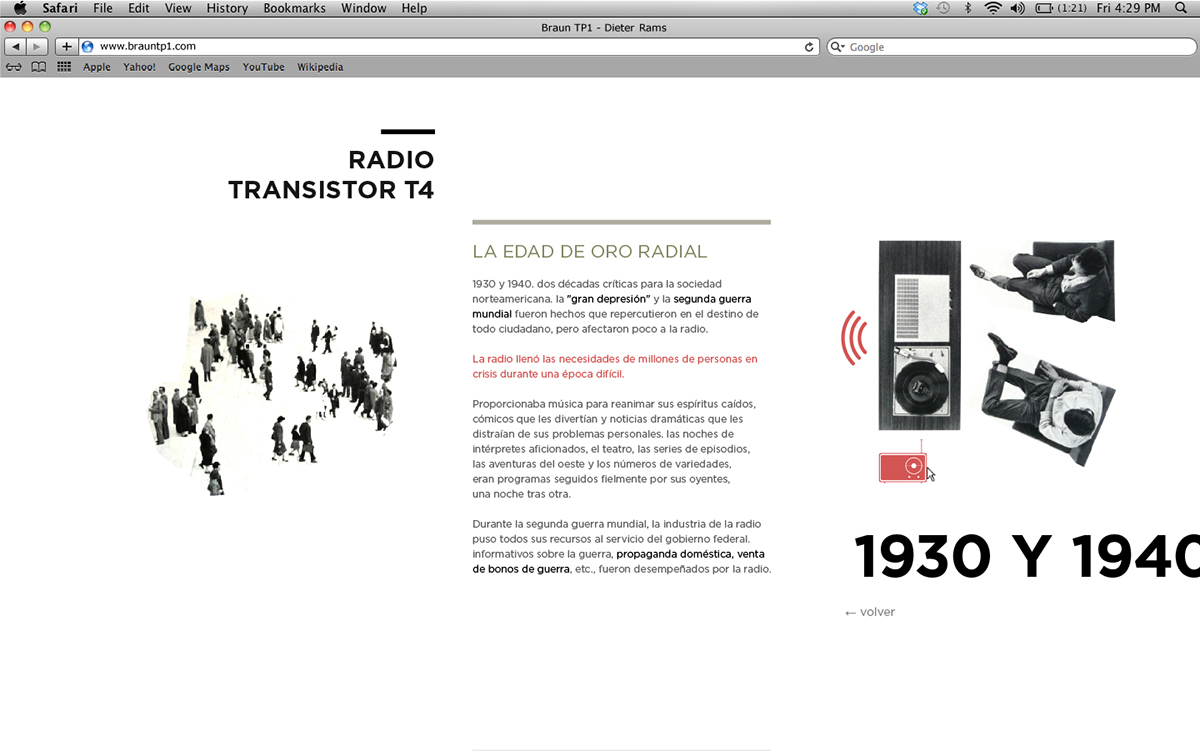
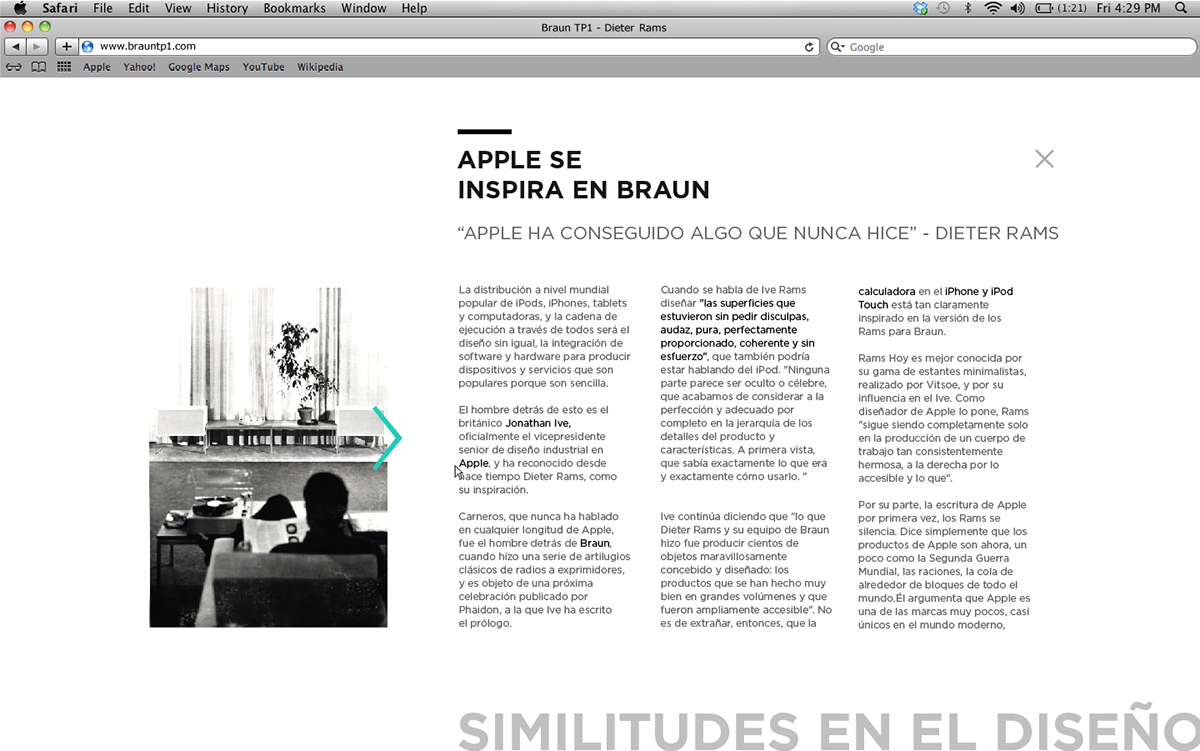
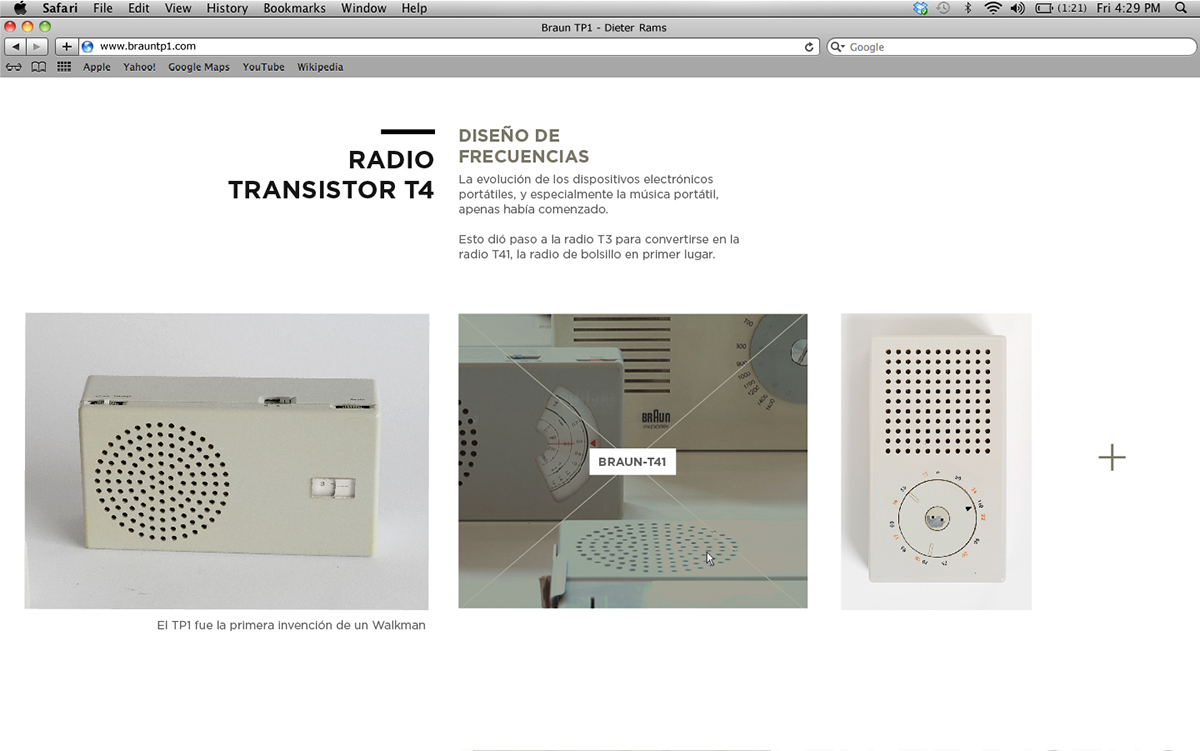
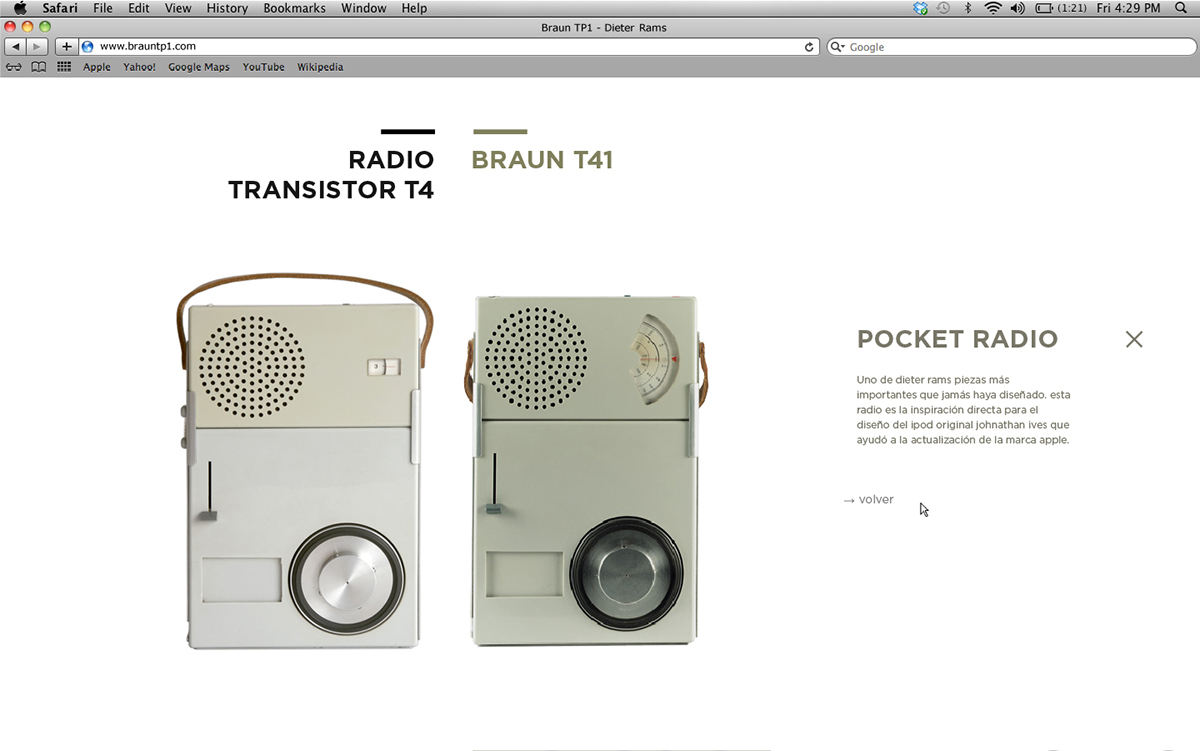

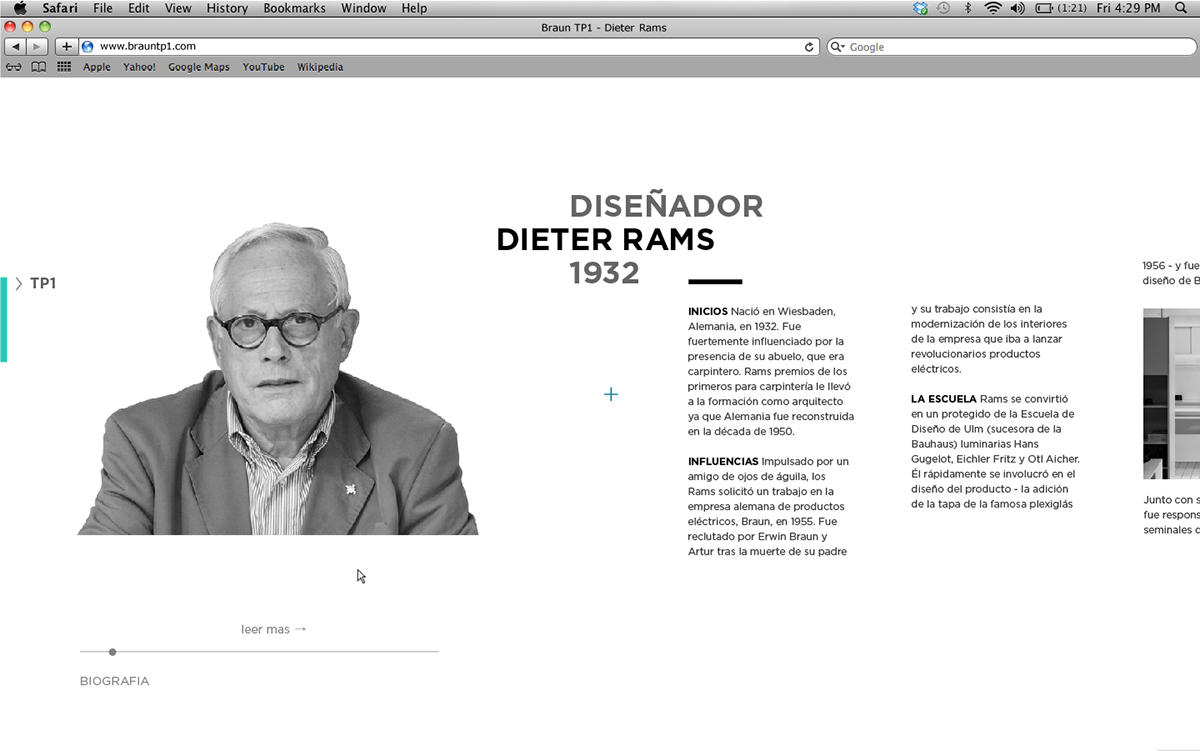
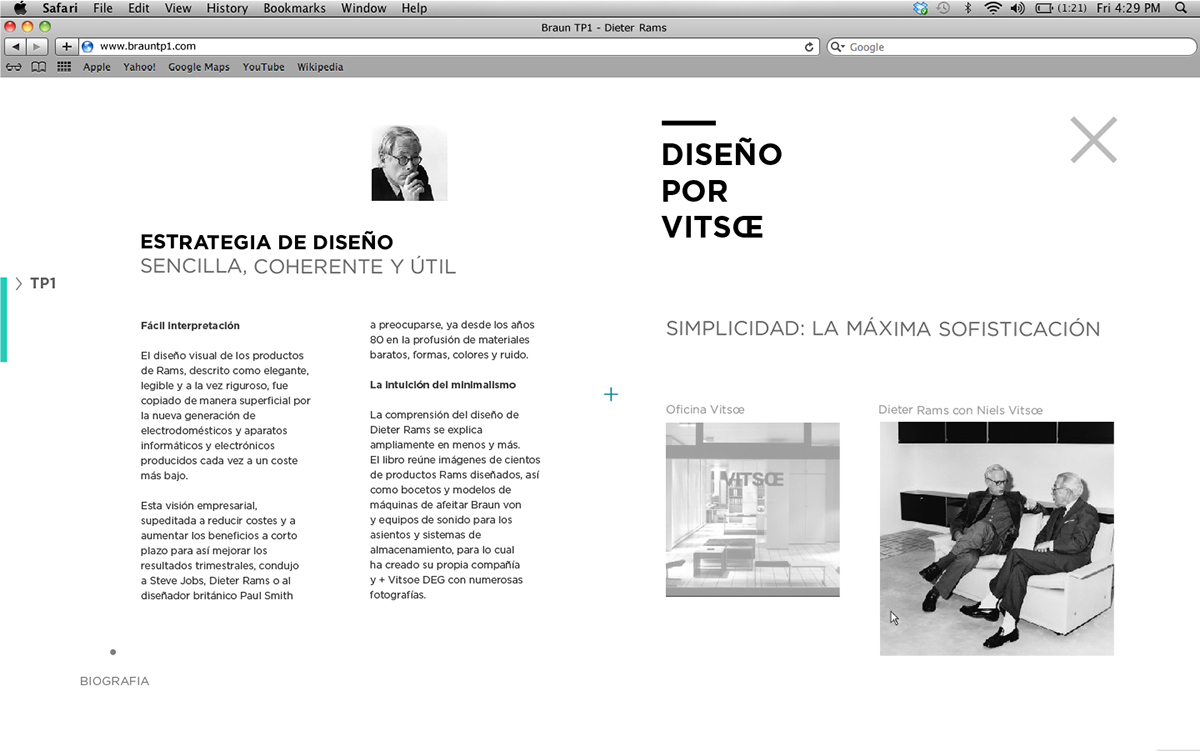
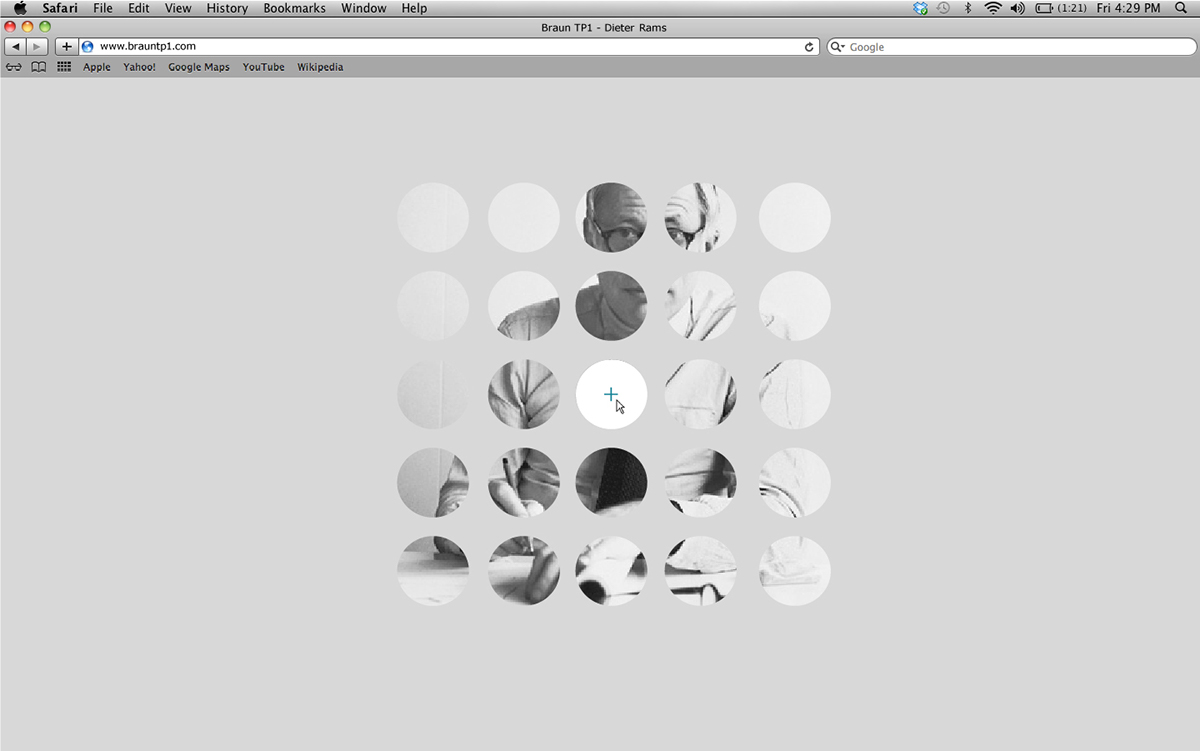

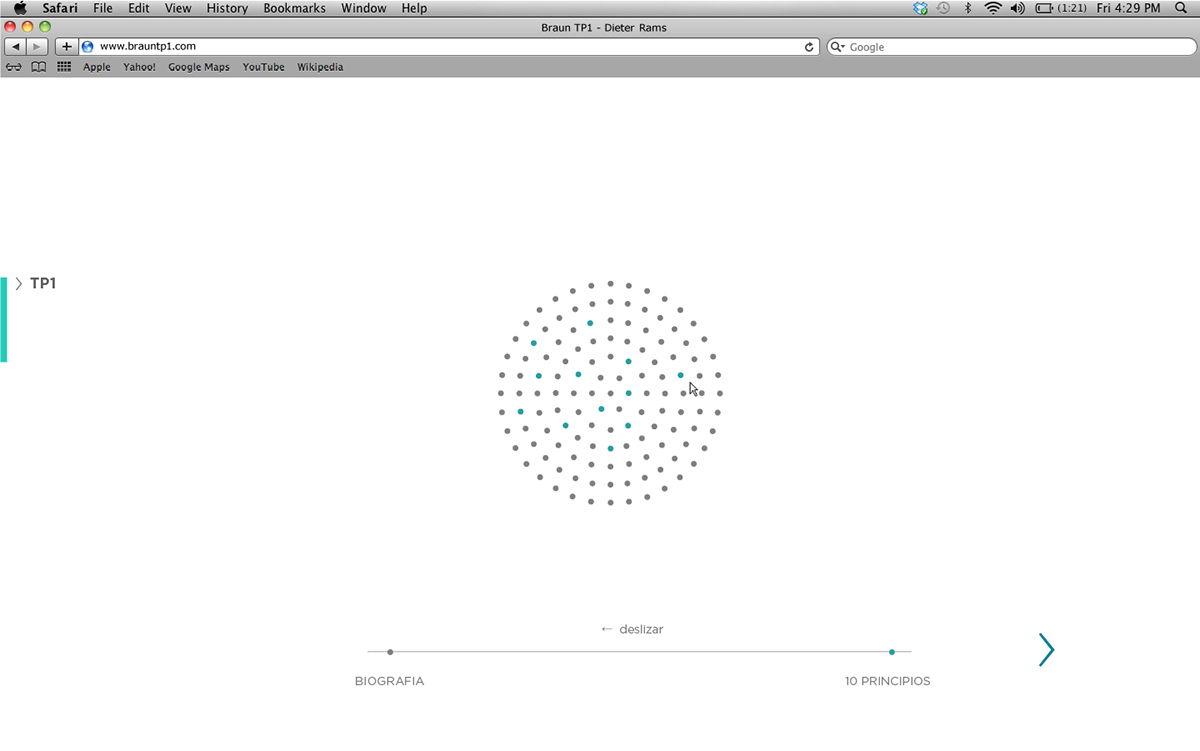
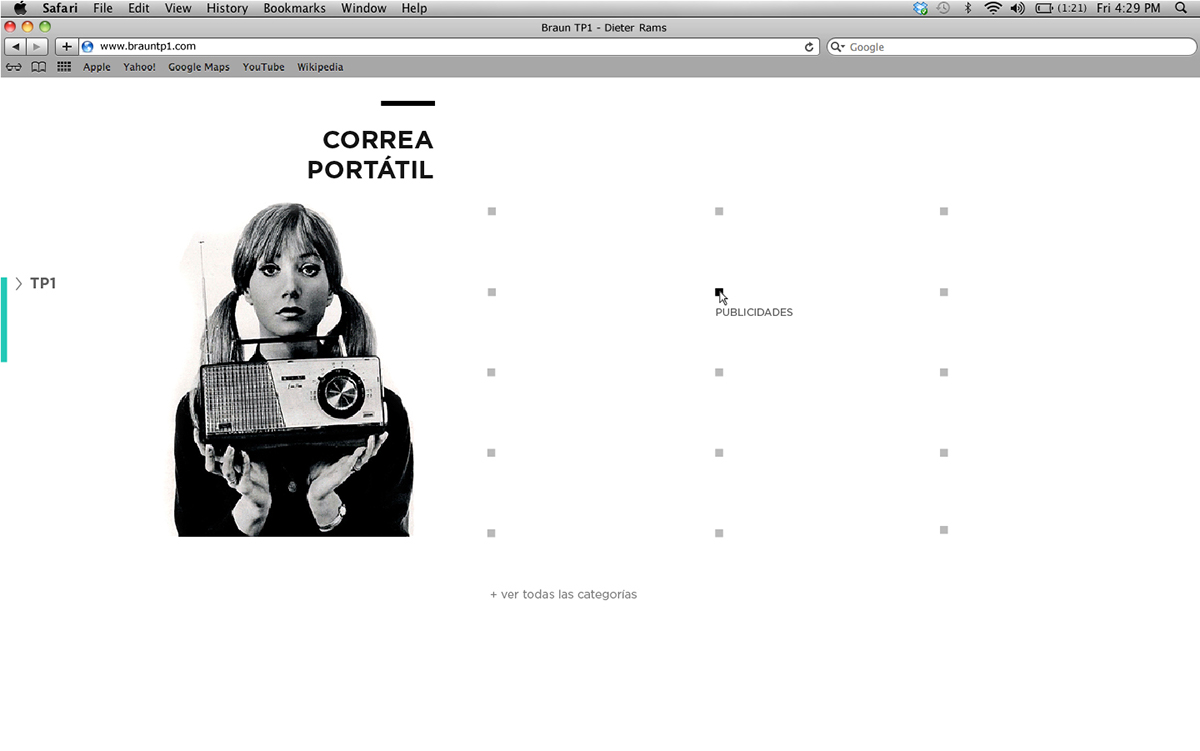
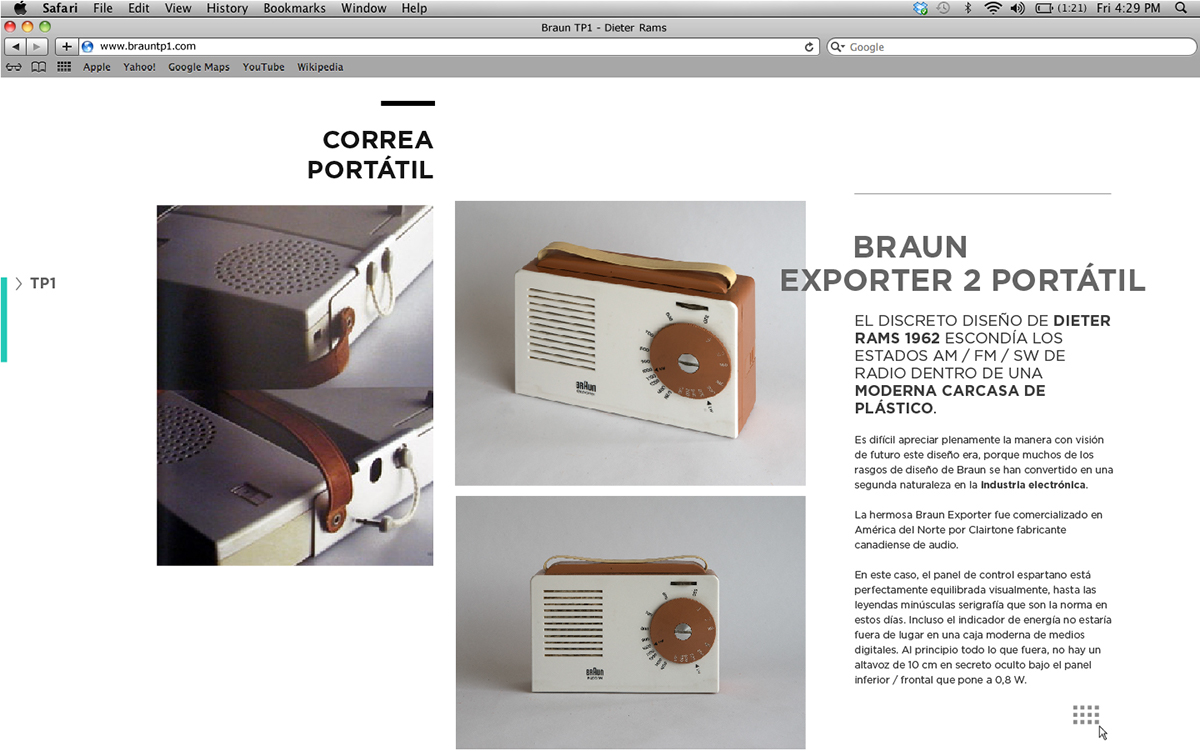

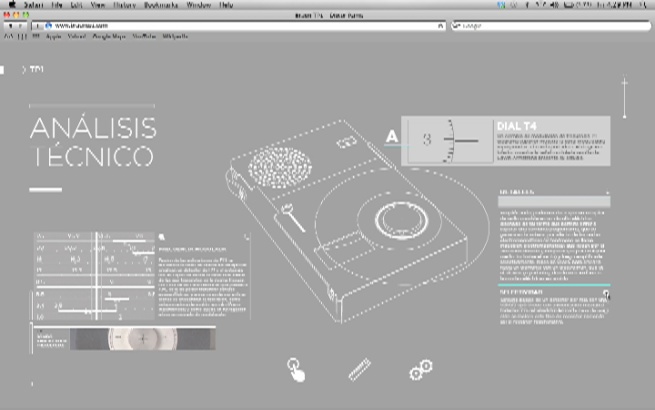
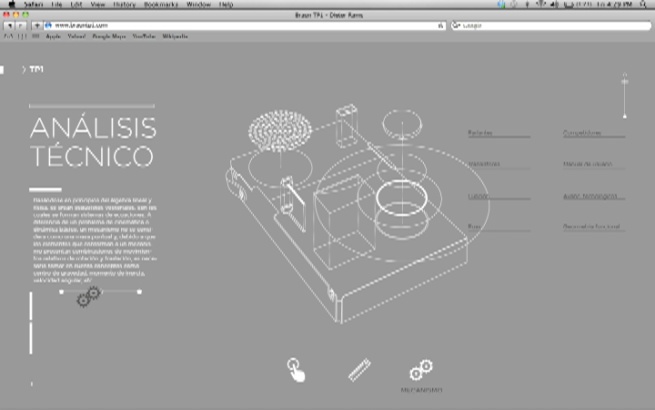
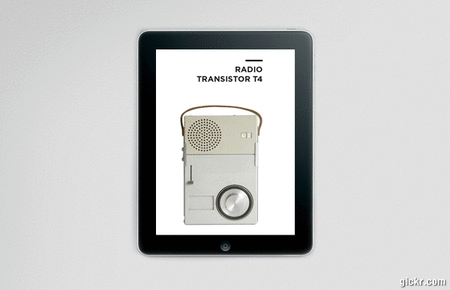
FADU - UBA - 2012
University project designed by Laura Guarie and Anibal Acosta (aka Little Crow)
University project designed by Laura Guarie and Anibal Acosta (aka Little Crow)


